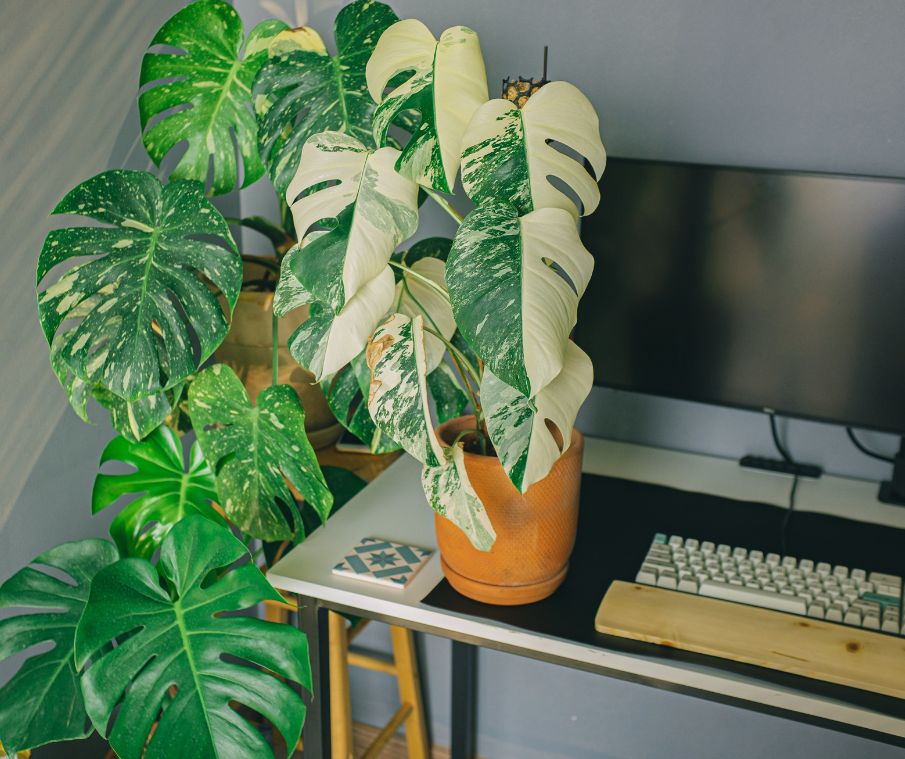If you've spent anytime looking for #planspiration on Instagram or Pinterest, you've come across the world of variegated houseplants. Did you know that unlike their green leafed cousins, variegated houseplants need different care? Here's 3 things to keep in mind:

But first, what are variegated leaves?
A different gene sequence removes the chlorophyll from your plant's leaves. No chlorophyll = no green colour! It means that the tissue remains white or yellow. Over time, the cellular tissue of plants have been bred specifically to create variegated species for us houseplant lovers.
Give your variegated houseplants more light!
The chlorophyll described above helps them absorb the energy from sunlight. When a plant is variegated, it has less chlorophyll, which means it can't absorb as much energy from the sun as a normal plant.
If your variegated houseplant is struggling, it may well be because of light. Move it to a spot with at least 8 hours of bright, indirect sunlight a day, and it should help!

Avoid any chemical fertilisers or harsh pesticides
Variegated houseplants are much, much more sensitive to mineral imbalances. Chemical fertilisers in particular can provide way too much Nitrogen, which makes them struggle and eventually go to plant heaven. Grow Concentrate and Support Pellets and both great to use on variegated houseplants, because they work with the roots to absorb the nutrients they need. Just use them like you would a normal plant.
Watch for Spider Mites. They LOVE variegated houseplants!
The increased sunlight and genetic make up of variegated leaves make them a prime target for Spider Mites. Watch for small webs on the top and bottom of your leaves. Make sure they're regularly cleaned with a good foliar spray.


